Basque Country; Bilbao, Spain to Biarritz, France, and a few stops in between
- Tony
- Dec 28, 2024
- 22 min read
Updated: Jan 5
December 2024.
On our quest to experience more of Europe, we head to the land of the Basques. The Basque region, located at the corner of two countries, sits on the Bay of Biscay near the Atlantic coast and stretches inland to the Pyrenees mountains. The area stretches about 100 miles from Bayonne, France, to Bilbao, Spain.
The ancient, free-spirited land of the Basques is famous for its beaches, gastronomy, architecture…and for its feisty, industrious natives. It's also simply beautiful: Bright white chalet-style homes with deep-red and green shutters scatter across lush, rolling hills; the Pyrenees Mountains soar high above the Atlantic; and surfers and fishermen share the seas. While the French side of this area seems French first and Basque second, the Spanish side is without a doubt Basque first! The Spanish side has long fought for their autonomy from any connection to Spain or France, while the French side is proud of their Basque heritage. They are perfectly fine with the way things are, being French. The region has its unique caricature; you'll find a glorious mix of Basque, Spanish, and French influences in culture and cuisine. Top that off with its beautiful rolling countryside and a gorgeous coastline.
As with most popular summer destinations, our airport in Faro operates a reduced/limited schedule of flights during the winter months, limiting our options for travel from Faro. We usually resort to traveling up to Lisbon to access more direct flights with reasonable schedules. Some of our friends have discovered that Sevilla airport in Spain has a host of flights available year-round, making it an excellent option for winter travel. For this trip, we opted to fly from Sevilla, which is about the same distance as Lisbon but a much easier airport to manage for shorter flights throughout Europe and the region. From Sevilla, Bilbao in the North of Spain is a 1.5-hour flight. From there, we rented a car for the rest of the journey through the Basque region, with overnight stops in Bilbao, San Sebastian, and Biarritz.
When traveling in the winter, you've got to be ready for the weather. The first few days were dry with some sun and a little wind; the last 5 days were filled with showers, some heavy with strong wind, especially in Biarritz and Bayonne. It's still great to see these areas with fewer crowds for the most part. Dealing with weather requires that you prepare differently for it and occasionally ducking into monuments, shops, and restaurants when it gets a little difficult to handle.
Check out recommendations for your trip at the end of this post.
Bilbao
The Hotel Palacio Arriluce in Getxo, just outside of Bilbao, was our home for the first two days of the trip. It is located along the coast and embarcadero, minutes from the vibrant old center of Bilbao. A beautifully renovated former private home situated in an upscale neighborhood that felt more residential and comfortable than a stay in the city.
The area around the hotel is the city of Getxo, a quaint upscale neighborhood with several shops, restaurants, and Pintxos bars, as well as fantastic views of the river and the sea.
Our first night and the following day were spent walking around Bilbao through the Casco Viejo (Medieval Old Town) and Plaza Nueva areas. It doesn't feel like a typical European tourist destination, but it is more like a place where people live their everyday lives. Besides the city's fantastic architecture and nearby countryside beauty, there are few high-value tourist monuments to draw visiting crowds. There is, of course, the modern icon of the Frank Gehry-designed Guggenheim museum, but other than that, visiting Bilbao is about wandering through the differing quarters of the city, admiring the fantastic architecture, soaking up the local culture, local shops, and, of course, the Pintxos and gourmet cuisine that the region is well known for. We enjoyed Bilbao for these reasons.
The La Ribera Market is one of the largest covered markets in Europe. It was built in 1929 and is housed in a great building near the river. The floors of the vast hall are flooded with light from the large stained-glass windows. Here, you will find residents seeking out their favorite stall for fresh ingredients for meals at home or visiting one of the bars/restaurants for a meal or snack.
We enjoyed lunch at the Michelin star Etxanobe in Bilbao. I have been searching for good Scallops, which are not readily available where we live in the Algarve. The good news is they are everywhere in the Basque region, thanks to the cooler waters of the north. We shared the grilled local scallops, Chicken Cannelloni, Halibut, and grilled asparagus. The meal was well prepared and presented, the service was attentive and prompt, and the restaurant was inviting and comfortable.
One of the major attractions in Bilbao is the Frank Gehry-designed Guggenheim museum. Nearby, see Maman (Mama Spider), made of bronze, marble, and stainless steel, and Puppy, with its ever-changing coat made up of a garden of greenery and flowers.
Getaria
We stumbled upon this historic fishing village when we visited the area several years ago. Back then, we were lucky to find El Astillero, a traditional restaurant located in the harbor. Here, the family-run casual restaurant serves some of the best fish, fresh from the boats just a few feet from their door, and is a fine example of great meals you will find here.
Getaria, the birthplace of Juan Sebastián Elcano, the sailor who completed the first circumnavigation of the Earth in 1522, maintains its maritime soul, which has been kept alive for more than five centuries. The narrow streets of the medieval old quarter lead down to the port, lined with restaurant grills roasting the fresh catch from the harbor.
Although we loved El Astillero on our first visit to Getaria, we wanted to try something new on this trip. Our first choice for lunch was the famed restaurant Elkano, but they were closed for their annual holiday, so we chose Restaurant Kaia-Kaipe. The dining room was very nice, with a large window that provided harbor views from just about any table. The food and service were good but a little pricey, primarily due to the Michelin sign at the door, I presume.
San Sebastian
In San Sebastian, we stayed at the Hotel Maria Cristina. A fantastic location along the river and at the edge of the old town is an excellent base from which to explore San Sebastian on foot. One of the best hotels in San Sebastian is made more affordable during the winter off-season.
Opened in 1912, the hotel played a part in San Sebastian's growing popularity. It became a favorite destination for royalty and aristocrats who came to enjoy the sunshine and newly recognized therapeutic properties of sea bathing. In 1936, the hotel was briefly occupied by troops and a stronghold during two days of fighting. You can still see bullet holes in the façade.
San Sebastian is famous for its high-quality Pintxos bars (Basque for Tapas), most of which offer small plates of gourmet cold Pintxos on display and a menu for freshly prepared hot items. We opted for a private guided Pintxos tour on our first night to ensure we hit the best places. Colm, our guide, didn't disappoint as he covered some of the best options that night. Since the first night's tour focused on Pintxos in Old Town, for our last night, we headed across the river to explore the offerings in the neighborhood of Gros. I highly recommend exploring this neighborhood, which is off the usual tourist path and a great beach alternative in summer. If traveling here, there is a fantastic app called Pintxos, a collaboration of Michelin chefs who each year list their favorite Pintxos and the Bar they are served in. You can see the framed certificate on the wall of the Bar below stating which Pintxos the chefs selected.
Our favorite pastry, tortilla, and coffee stop at Mundukuona/La Tortilla del Zabaleta Plaza near the hotel. They are famous for their "Tortilla," a Spanish favorite made of a base of potato and egg
Pretty good Mexican street food for lunch @ San Remo
Sights from around San Sebastian. It's a very walkable city, and we suggest doing just that. Get out and wander around, not just the streets of the old town but beyond.
Mary arranged a special birthday dinner for us at Casa Urola. There's a lively Pintxos bar downstairs and a nice restaurant upstairs. Dinner started with beautiful artichokes and, of course, Scallops (not on the menu but famous Pintxos from the bar downstairs); I had the perfectly cooked filet steak, and Mary had the local Lobster. The food was excellent, well-prepared, and tasty, and the service was pleasant.
On the walk back to the hotel, we found a place open that specialized in Basque Cheesecake and stopped in for a slice. If you haven't had this, it's very popular and incredibly good, with slight variations available in each town (sorry no photos, it didn't last long enough).
Another example of keeping culture and culture alive is Saint Thomas's Day. It's a BIG celebration in San Sebastian and other nearby cities on Dec 21st. The celebrations began in the mid-19th century when the farmers (baserritarra's) from the province would make their way into town to pay their yearly rent to the owners of the land they worked. To make the most of their visit to the city, they would sell their produce, cheeses, meats, and livestock and stock up on the things they couldn't obtain where they lived.
The result today is the city turning into an enormous market, the star of which is the txistorra (fresh chorizo-like sausage). Stalls are set up all over the city, offering all sorts of food and craft wares produced mainly by the people from the local farmhouses. These include cheese, honey, txistorra sausage, cider, and cakes.
During the Holiday season, displays are set up around the city depicting Basque life and Christmas culture.
For a few days surrounding Saint Thomas's Day, people dress in costumes reminiscent of the Basque farmers (There are shops in the city that sell or rent costumes for the festivities).
We were leaving San Sebastian on the day of the celebration but managed to walk around and see some of the early festivities. According to locals we spoke to, it gets pretty wild in the afternoon and evening. As we were leaving around noon, people were streaming into the city in mass. I can only imagine what the party was like that night.
Hondarribia
A small riverside fishing village near the Atlantic coast and on the border of Spain and France. The Visigoth King Recaredo founded it in the 6th century, and today, it is one of the Basque Country's most charming towns. There are two main sections to visit; near the marina, you'll find the old fisherman's quarters, typical colorfully painted seaside houses and streets lined with quaint bars and restaurants, and up the hill, the well-preserved walled city of narrow cobblestone streets, ancient and noble buildings.
Although small, the walled city feels like a time capsule filled with well preserved houses, monuments, and a former fortress that has been converted into a hotel.
Biarritz
Crossing the border, we head into the French side of Basque country, where we would base in Biarritz for a few days. We stayed at Hotel Le Garage, a modern project converting a historic car repair garage into a boutique hotel.
Sights from around Biarritz. It is a small but upscale seaside village and a popular summer holiday destination where old-school glamour meets shaggy surf culture. Beautiful beaches, palatial hotels, Excellent Surfing, Avant-garde Fashion, and great food combine to create an irresistible mix.
Dinner at Marloe, located on the outskirts of the city in an austere modern building with the interior a bit more modern, expansive, and cold than we expected from such a highly rated French Bistro. Luckily, the food and service made up for the visual letdown. The Chickpea soup, Scallops, and seafood Cannelloni were well prepared and presented.
Les Halles in the city center is a pedestrian promenade filled with boutique shops and small restaurants anchored by the popular covered market. Inside the market, the stalls are a true paradise for gourmets: fresh produce, bakers, cheesemakers, butchers, shellfish, and more. This a stop that is not to be missed!
Nearby Biarritz is the equally gorgeous St. Jean de Luz, another small seaside town and former fishing village with cobbled streets zig-zagging through the center. A little less "fancy" than Biarritz, there is a comfortable charm throughout the city.
Dinner at Chez Mattin near the harbor in St Jean de Luz. Anthony Bourdain said, "If you only have time for one meal, this is probably the one," and we couldn't agree more. A small family restaurant is run by Chef Michel in the kitchen, and his wife Céline is in front of the house.
Tucked away in a residential neighborhood near the harbor you'll find a small unassuming entrance that leads you into a comfortable dining room that feels like you could be in someone's home. As the evening progressed, the restaurant was filled mainly with locals and repeat guests, we assumed due to the greetings from the owners. The food was exceptional, with seafood as the focus. The scallops and sole were perfectly cooked, and their famous Ttoro (a traditional Basque fish soup) was outstanding.
Just inland from Biarritz, we visited the riverside city of Bayonne. The center consists of narrow cobbled streets lined with colorful wood beams and shutter-clad Basque houses above and quaint shops and restaurants at the street level. Bayonne is famous for its chocolatiers, Bayonne ham, and The 12th century Sainte Marie Cathedral, where the chapels around the apse have been restored to their original beautiful patterns and colors.
Sainte Marie Cathedral
During our visit, the market hall was lively, with a few people shopping for their groceries, but most here were socializing at the seafood counter and the Charcuterie vendor for wine and a snack.
After traveling through the Basque region, we returned to Bilbao for our last night of the trip before departing for home the next day. We stayed at the Hotel Carlton in Federico Moyua Plaza, which is centrally located in the city. Beautiful and cheap to stay in the winter, this was an excellent base for our last stay in Basque country.
To our surprise, the night we decided to stay here, the Hotel was the base for a huge festive holiday celebration and parade. It makes your heart happy to see the people of these communities keeping the important cultural and historical traditions alive and relevant.
It seems that Basque culture has its own version of Santa and the Mrs. The traditional festive spirit of the Kalejira parade that draws thousands of locals that fill the plaza and streets of Bilbao as the beloved characters Olentzero and Mari Domingi (the Basque version of Santa & the Mrs.) return for their annual Christmas appearance. The performance featured colorful cultural costumes, lively music, and performances from various community groups.
Immediately following the parade, the well-orchestrated cleanup brigade was equally as impressive. Bilbao is a very clean city; now we know why, as they seem to take great pride in keeping it that way.
The next day we were on our way home. We do love this region no matter what season we visit. The culture, the people, the food and the scenery are all fantastic reasons that will continue to draw us back to visit and continue to explore.
Here's our notes on the trip
Basque Country December 2024
Bilbao
Guggenheim
PINTXO BARS IN BILBAO
In the evening, stroll through the Casco Viejo – the lively historic center of Bilbao – join in a txikiteo (Tapas Crawl) with the locals.
RIO OJA Calle del Perro 6 (+34 34 944 150 871)
RESTAURANTE VICTOR Plaza Nueva 2 (+34 34 94 415 1678) 4.1/5
XUKELA Calle del Perro 2 (+34 34 944 159 772)
Plaza Nueva, here you can find the best pintxos, try Victor Montes 4.3/5
Café Iruña
El Globo
Cork – Wine Bar 4.6/5
Taberna Basaras 4.6/5
THE MERCADO DE LA RIBERA, BILBAO
One of the largest markets in Europe, built in 1929
This is housed in the great golden building looming up beside the river, where a wall plaque announces this to be the largest covered food market in the world. Whatever the size, there's no mistaking the quality of the produce. In late spring you may find bags of hand-shelled baby peas and thick asparagus wrapped in cabbage leaves in little square baskets. Upstairs, in a vast hall flooded with light from the stained-glass windows, there are more sights for sore eyes and hungry mouths: heaps of crumbly white sheep's cheese made that morning, racks of dried peppers hanging in crimson curtains, fat snails as big as walnuts and thin green peppers in vinegar – a Basque speciality – put up in pickling jars.
Bilbao Maritime Museum
Bilbao Christmas Market is one of the Best Christmas Markets in Spain. Bilbao is a great place to celebrate Christmas, filled with lights, festive markets and grand parades.
One of the shopping highlights are the many Christmas markets that take place around the city Old Quarter and Bailén street. Formed by close to 40 wooden stalls, Bilbao´s Christmas Markets offer a great variety of products: craftsmanship, Basque products, Christmas decorations and of course, gastronomy
Food & Drinks in Bilbao
✔ Etxanobe – 4.7/5 & one Michelin star for the fine dining restaurant. They also have a more casual bistro La Despensa Etxanobe - The Etxanobe Pantry “ Casual haute cuisine”. 4.7/5
La Vina del Ensanche, one of the city's most popular restaurants
Abadia del Gin Tonic – over 400 gins!
Mugarra 4.7/5
ASADOR ETXEBARRI: (Bourdain) 33 minutes from Bilbao, 1 hour from San Sebastian, San Juan Plaza, 1, 48291 Atxondo, Bizkaia, Tel +34 946 58 30 42, www.asadoretxebarri.com (set menu 180 euros/US$200 per person 4.4/5
OTHER GOOD RESTAURANTS IN THE BASQUE COUNTRY
You can meander along the coast through the string of pretty ports: Mundaka, Lekeitio, Ondarroa, Zumaia and Getaria, sampling the food at each of their harbourside restaurants.
RESTAURANTE KAIA-KAIPE Calle de General Arnao 4, Getaria (+34 34 94 314 0500). 4.4/5
El Astillero Portua Kalea, 6, Getaria (+34 943 14 04 12). A less formal option to Kaia-Kaipe, Authentic seafood restaurant in the harbor. 4.5/5.
RESTAURANTE EL PORTALON Calle Correria 3, Vitoria (+34 34 94 514 2755).
Getaria - All its narrow streets lead down to the port, and there will be grills roasting up incredibly fresh fish in every corner of the city. If you want the best taste of those 500 years of seafaring history, make a reservation in Elkano restaurant (Closed Dec 15-Jan15) , and enjoy fantastic food with great views of the harbor. Elkano Txiki is open and has great food too
Gernika 32 minutes from Bilbao
Guernica (“Gernika” in Basque and "Gernika-Lumo" officially) is known throughout the world due to the painting by Pablo Picasso that bears the same name. The painting shows the suffering and tragedy that Guernica endured on the 26th of April 1937.
On that day, German and Italian air forces bombed Guernica, destroying everything but a few buildings. The German and Italian forces were supporting Francisco Franco to overthrow the Republican government during the Spanish Civil War.
Vitoria-Gasteiz 51 minutes from Bilbao
The city of Vitoria-Gasteiz is a must-visit if you’re interested in experiencing a less-Spanish kind of party, by which I mean, in case you’re tired of nights out that go on until well into the early morning. Because here, in the the capital city of the Basque Country, you can enjoy the best and earliest poteos (evening or afternoon drinks) in the region.
Starting at around 5:00 PM every weekend, almost everyone in the city heads down to the old town for pintxos and wine (from the nearby Rioja region). The streets are packed, the atmosphere is festive, and the food and wine abundant and delicious.
Everything gets going early, so you won’t need to wait until 10:00 PM for dinner or feel like you’re missing out if you head to bed before midnight. Sometimes in Spain, that’s a relief.
RESTAURANTE EL PORTALON Calle Correria 3, Vitoria (+34 34 94 514 2755).
Getaria – 1 hr from Bilbao, 30 minutes from San Sebastian
Getaria is another historic fishing village, but even smaller and more off the beaten path than the two mentioned above. Juan Sebastián Elcano, the sailor who completed the first circumnavigation of the Earth in 1522, was born here and the town’s maritime soul has been kept alive for more than five centuries.
All its narrow streets lead down to the port, and there will be grills roasting up incredibly fresh fish in every corner of the city. If you want the best taste of those 500 years of seafaring history, make a reservation in Elkano restaurant, and enjoy fantastic food with great views of the harbor.
This quaint town on the coast has a medieval old quarter and some of the absolute best fish/seafood restaurants in the Basque Country! secure reservations at one of our favorite restaurants in the town for delicious lunch of grilled fish/seafood. Many claim that is the best they have ever tasted!
Visit the Balenciaga Museum – dedicated to the fashion designer
Getaria txakoli wine country
Food & Drink in Getaria
✔ Elkano restaurant One Michelin Star (Bourdain)(Closed Dec 15-Jan15) , and enjoy fantastic food with great views of the harbor. Elkano Txiki is open and has great food too 4.7/5
RESTAURANTE KAIA-KAIPE Calle de General Arnao 4, Getaria (+34 34 94 314 0500). 4.4/5
El Astillero Portua Kalea, 6, Getaria (+34 943 14 04 12). A less formal option to Kaia-Kaipe, Authentic seafood restaurant in the harbor. 4.5/5.
San Sebastian 1:15 from Bilbao
12/21 Saint Thomas's Day
The famous celebrations for Saint Thomas's Day take place every December 21st. The city turns into an enormous country market of which the absolute star is the txistorra (fresh chorizo-like sausage). Stalls are set up all over the city, offering all sorts of food and craft wares, mostly produced by the people from the local farmhouses. These include cheese, honey, txistorra sausage, cider and cakes. The Santo Tomás celebrations date back to the mid-19th century, when the inhabitants of the farmhouses (baserritarras) in the province would make their way into town to pay their yearly rent to the owners of the land they worked. Making the most of their visit to the city, they would sell their agricultural produce and stock up with the things they couldn’t obtain locally. In time a fair took shape in the Plaza de la Constitución.
PINTXO BARS IN SAN SEBASTIAN
If traveling here there is a fantastic app called Pintxos, a collaboration of Michelin chefs who each year list their favorite Pintxos and the bar they are served in. You can see the framed certificate on the wall of the recognized Bars stating which Pintxos the chefs selected.
✔ Ganbara – (Bourdain) Calle San Jeronimo 21. This is a particularly good choice. The French influence is evident in the hot crab tartlets, the deep-fried asparagus, and the melting little croissant halves that replace the usual pintxo bread. 4.3/5
✔ Txepetxa - Calle Pescaderia 5. This pintxo bar is one of the best-kept secrets. Known as the 'temple of the anchovy', these little fish are sensationally good, cured in vinegar with everything from sea urchin eggs to olive paté, crabmeat and papaya. 4.7/5
✔ Atari Gastroleku – Right in the medieval center this contemporary bar uses the finest ingredients in its traditional and avant garde pinxtos. The prawn skewers are famous, good wine list 4.5/5
✔ Bar Bergara – Just over the river in Gros, has won prizes for its exquisite nibbles. 4.3/5
Antonio
✔ MuxuMartin
✔ Bar Barda Berri
✔ BAR HAIZEA: (Bourdain) Aldamar Kalea, 8, 20003, Donostia, Gipuzkoa, Tel +34 943 42 57 10 (pintxos 1.50–4 euros/US$1.75–$4.50; raciones (plates) 4–14 euros/US$4.50–$15.50; bocadillos (sandwiches) 4–5 euros/US$4.50–$5.50 4.5/5
Casa Urola – Landmark restaurant & Pintxos Bar in the old town founded in 1956
Bar Ricardo (Calamari, Mussel Croquettes)
Bar Mendi Berri (Grilled Scallops, Veal Cheek)
Bar Lapiko (Grilled Mushrooms)
Bar Adamo (Tortillas)
MERCADOs San Sebastian
LA BRETXA - The fish market in San Sebastián, is, if anything, even more impressive than the one in Bilbao, because the fish here are laid out on white marble slabs and lit theatrically from above, while the fishwives stand proudly behind on raised platforms. This is a society that takes its seafood with the greatest seriousness. Distinctions are made in the market, for example, between fish from the various Basque ports (Ondarroa is known for hake, Bermeo for sea bream) and the various methods of catching: hook or net. Depending on the time of year, you might find river crayfish, baby eels and that suggestive-looking and expensive delicacy, the barnacle. Seasonality and freshness are always cardinal rules.
SAN MARTIN - San Sebastian’s central market, just in from Laa Concha bay, opened in 1884, and underwent a complete transformation in 2006. Traditional food stalls, concerts, and cultural events
Food & Drink in San Sebastian
Arzak – legendary three Michelin Star restaurant 4.7/5
Akelare – three Michelin star
Petritegi Cider House –
✔ Casa Urola – Landmark restaurant in the old town of Donostia-San Sebastian, founded in 1956 and run by chef Pablo Loureiro Rodil. Locally sourced, excellent seafood and meat. In 2019, Casa Urola was awarded the Euskadi Gastronomy Prize for the Best Restaurateur by the Basque Gastronomy Academy. 4.5/5
ASADOR ETXEBARRI: (Bourdain) 33 minutes from Bilbao, 1 hour from San Sebastian, San Juan Plaza, 1, 48291 Atxondo, Bizkaia, Tel +34 946 58 30 42, www.asadoretxebarri.com (set menu 180 euros/US$200 per person 4.4/5
Bermeo & Hondarribia – 25 minutes from San Sebastian
As I’ve already mentioned a few times, the Basque Country as a region is highly influenced by the Cantabrian Sea. From its cuisine to its way of living and its history, every aspect of Basque culture demonstrates that closeness to the ocean. And there’s no place to feel that proximity better than in fishing towns like Bermeo and Hondarribia, a 20 to 30-minute drive from Bilbao and San Sebastián, respectively.
Bermeo and Hondarribia were home to the famous Basque whale fishermen of the 15th and 16th centuries, who as legend goes, supposedly got to America even before Christopher Columbus did, and created their own version of the Basque language in Iceland.
Although today’s inhabitants of these villages aren’t quite so adventurous, they do preserve their fishing traditions and you can see fisherman coming in to port every morning with the day’s catch. When you get hungry, go for a walk through the historic core of the villages, and then find an old-school fish tavern where you can enjoy that very same freshly caught fish
Food & Drink in Bermeo & Hondarribia
Alameda – Michelin one star, If you’re on the lookout for a restaurant with a true soul and no little history, you’ll find it at Alameda, where the Txapartegi brothers have transformed this restaurant into a must for food-lovers and where they closely follow the wise words of their grandmother Julia: “the shorter the distance between the soil and the stove, the better”. Choose between two distinct and pleasantly renovated dining spaces: the “taberna” and the gastronomic restaurant itself, the latter boasting a classic, rustic decor but with added attractive and modern features.
Biarritz
The must-see places to visit in Biarritz
Go for a walk in Biarritz and discover the most beautiful spots with a lovely gourmet stopover in the heart of Les Halles on arrival. Follow the sea from the Phare de Biarritz to the Côte des Basques, a lovely two-kilometer, one-hour walk offering a breathtaking panorama! Download the City of Biarritz app to discover the history along the way. You will find signs installed in remarkable historical places to learn all about the heritage of this seaside town.
The Biarritz Lighthouse
don't miss the opportunity to see the Biarritz Lighthouse up close. If the panorama of the entire coast at the foot of the Lighthouse is already magnificent, what will you say about the 360° view from the top of the Lighthouse after climbing the 248 steps for the bravest? You will see three rocks emerging from the water: the Tombeau at the closest, then La Frégate, which is the large elongated rock, and the Roche Ronde or pierced, a geological monument emblematic of Miramar beach. The latter is an ornithological reserve intended to preserve the smallest of Europe's seabirds: the storm petrel. Admire the waves breaking on the sandy rocks.
The Rock of the Virgin
This is the emblematic place of Biarritz! It is a metal footbridge built by Gustave Eiffel above the ocean and which leads to the rock where the statue of the Virgin Mary stands at the top. It was installed in 1865 and Napoleon III decided to pierce this rock and have it connected to the coast by a footbridge to build a dike. Legend has it that in the 19th century, at the time of whaling, whalers were caught in a storm, preventing them from reaching the port when suddenly a divine light guided them. The survivors then erected this monument as a thank you. In good weather, do not deprive yourself of the pleasure of crossing the footbridge and admiring at the end a spectacular view with on one side the Grande Plage and the Biarritz Lighthouse and on the other the Côte des Basques and the Pyrenees as a backdrop.
The beach of Port-Vieux
Continuing your walk along the seafront towards the north, you arrive at the small beach of Port-Vieux. It is a magnificent rocky cove with incredible charm , nestled at the bottom of a rocky cove in the city centre . Sheltered from the winds and waves, it allows you to swim safely and enjoy transparent water . Originally, it was from Port-Vieux that fishermen went whale fishing in the 7th century. The last whale was caught in 1686 and 100 years later, sea bathing replaced fishing . It was on the beach of Port Vieux, in 1859, that the first bathing establishment was built, with its cabins and tents for men and women and that generations of Biarritz residents learned to swim . Even today, people come to the Plage du Port-Vieux to swim. We love its diving board embedded in the rock , worn by the sea and very photogenic!
The Basque Coast and Villa Belza
Continue along the coast and you will come face to face with the mysterious Villa Belza . It is this one that dominates, on the rock of Halde, the immense bay of the beach of the Côte des Basques. It is a neo-medieval style villa built between 1880 and 1895 by the architect Alphonse Bertrand . You are on the mythical beach of the Côte des Basques, the cradle of surfing in Europe . On this immense beach of fine sand, surfers of all levels have a great time! The panorama is incredible and offers a beautiful clear view of the Basque mountains offshore.
Stopover at the Biarritz Market Halls
Has this lovely stroll under the ocean spray whetted your appetite? Don't leave without stopping by the Halles de Biarritz in the city centre. This colourful place to live in Biarritz will amaze all your senses. Come and enjoy fresh oysters at the bar or on the terrace, accompanied by a glass of white wine, or try other local specialities . Inside, the stalls are a true paradise for gourmets : greengrocers, bakers, cheesemakers, butchers, grocers, delicatessens, shellfish sellers, etc. But also florists and other local institutions not to be missed! The Halles are open every day from 7:30 am to 2 pm.
Food & Drink in Biarritz
✔ Marloe - The Basque-based sister bistro to the popular Parisian one, itself the lower-key version of the same team’s Michelin-starred L’Arôme based in the capital. Chef Anthony Ruffet celebrates the Basque larder through international dishes to fine effect. £60. 45 avenue du Président J F Kennedy, Biarritz, 00 33 5 5922 3498, marloe-biarritz.fr 4.9/5
Briketenia - Michelin one star, The region – as on the Spanish side of the border – is dotted with Michelin-starred places. Briketenia, run by father and son Martin and David Ibarboure, has held such status for 25 years, turning the local larder into culinary art, with a good-value ‘market’ lunch. 4-course lunch menu, £42. 142 rue de l’Église, Guéthary, 00 33 5 5926 5134, briketenia.com
✔ Chez Mattin - If you only have time for one meal, this is probably the one. Chef Michel Niquet runs the kitchen and his wife Céline runs the front of house. Reservations are marked by Post-it notes on your table. The food is pure Basque, there’s a heavy seafood focus, and the ttoro – a traditional fish soup laced with Espelette pepper, served with the crispest of garlic heavy croutons – will change your life. £50. 63 rue Evariste Baignol, Ciboure, 00 33 5 5947 1952, chezmattin.fr 4.7/5
Olatua - Biarritz centre, near the Aquarium (Closed for the Winter months - For ocean views & modern, summer, tapas style food. Olatua is the perfect spot for visitors to enjoy Biarritz in all its glory. Go for a sunset dinner or lunch, both are delightful. With no bookings available you must go early. For dinner in the Summer, I’d recommend being there before the doors open at 6pm (double check that time before you go).
Etxola Bibi - Biarritz, Cote de Basque (Closed for the Winter months) - Definitely go for sundowners, either before heading out for dinner, or opt for a snacky, platter style dinner there. With views along the iconic Cote de Basque, all the way down to Spain, this is such a gorgeous spot to watch the sun melt away until another day. Also great for a coffee or juice in the morning, or a light lunch – poke bowl, croque monsieur etc.
A restaurant in Les Halles - I know that’s quite vague but the streets surrounding Les Halles are the place to be on a summers evening. Each restaurant has tables spilling over onto the street, the busy atmosphere really creates a nice energy. Take your pick, they’re all pretty decent, some options include:
Café du Commerce – traditional French cuisine, casual B/L/D
Les Contrabandiers – tapas style food
Christera & Coquillages – seafood with a Spanish influence
Jack the cockerel - Biarritz centre, Grande Plage - I personally love this place, it’s funky, vibey and has great cocktails and good summer style food, including bar food classics (fish & chips etc). With DJ’s in the evenings (more in Summer and weekends), you can turn a bite to eat, into a party. The expansive balcony looks over Grande Plage so it’s perfect for watching the sunset too. The decors fun, as are the 3 brothers that own it.
Après Demain - Biarritz, St Charles - This tiny restaurant offers cutting edge tasting menu (degustation) style cuisine. It’s innovative, without bring pretentious. The chef is lovely, and talks you through the inspiration behind every dish. The food not only looks exquisite (see image above of an ashtray, this is actually scallops!) but it’s delicious too, and very reasonably priced for the creative and technical effort that is put in (about $50 for the smaller tasting menu, which is very filling).




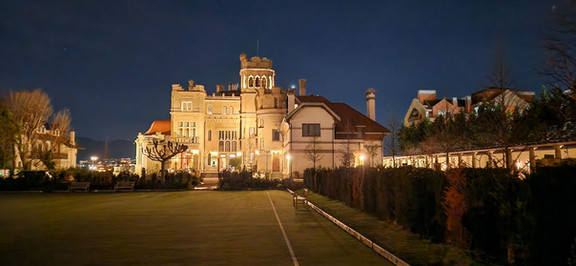









































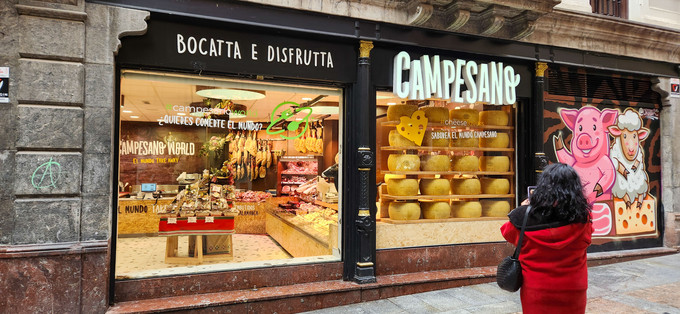

































































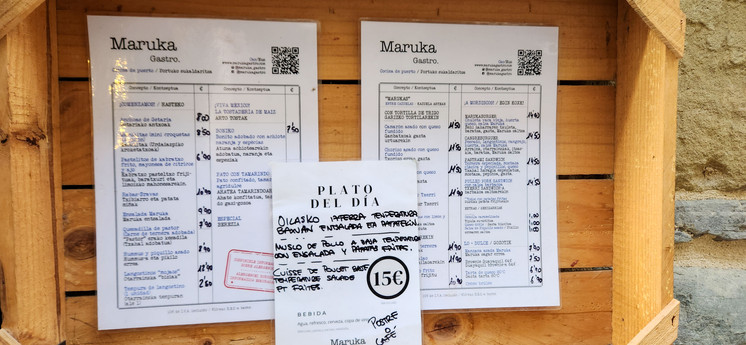





























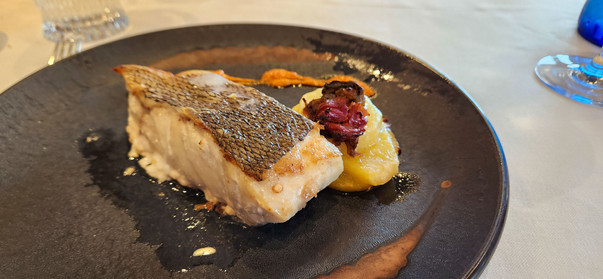







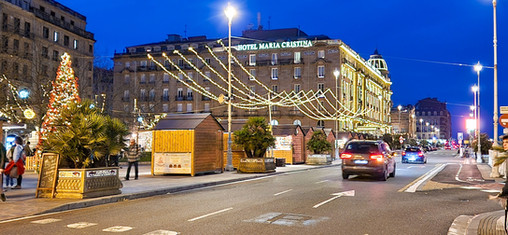

















































































































































































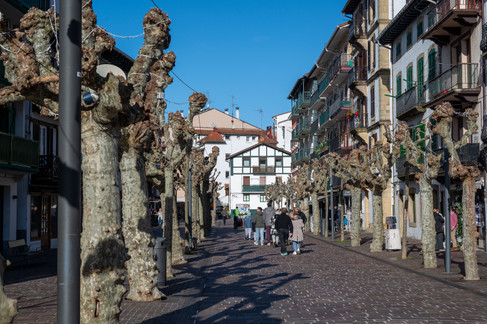

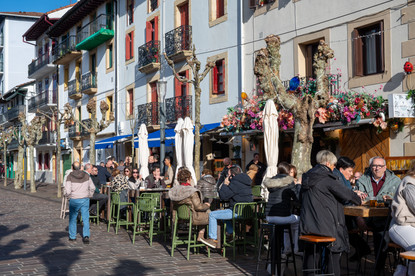



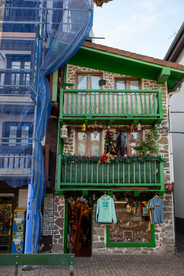







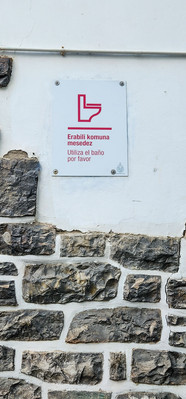

















































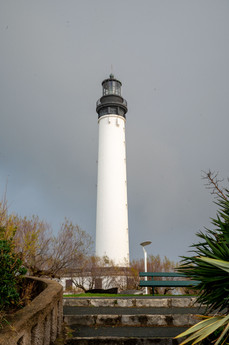



































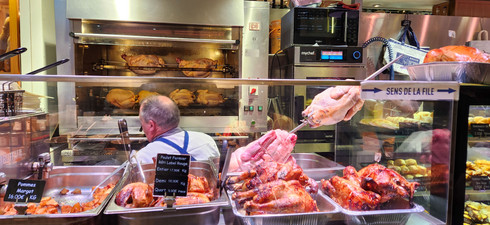

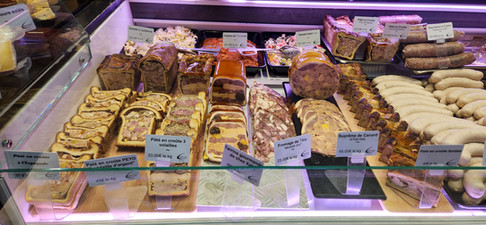









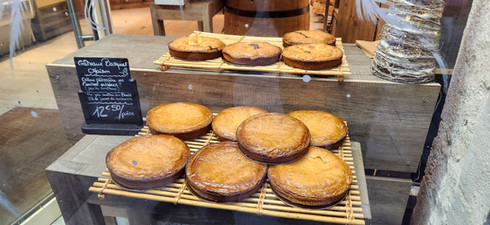



















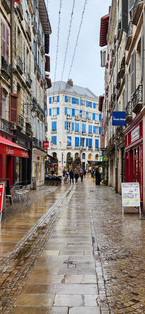









































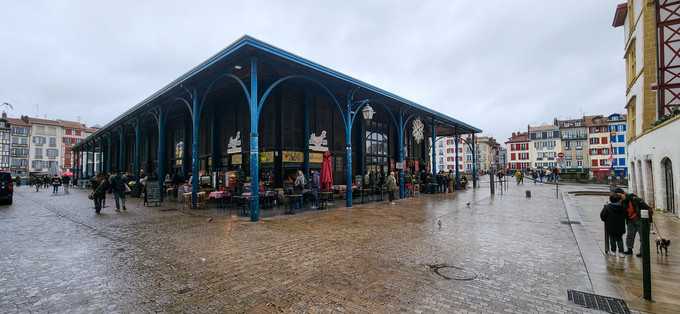











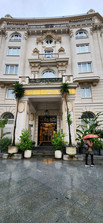





































Comments